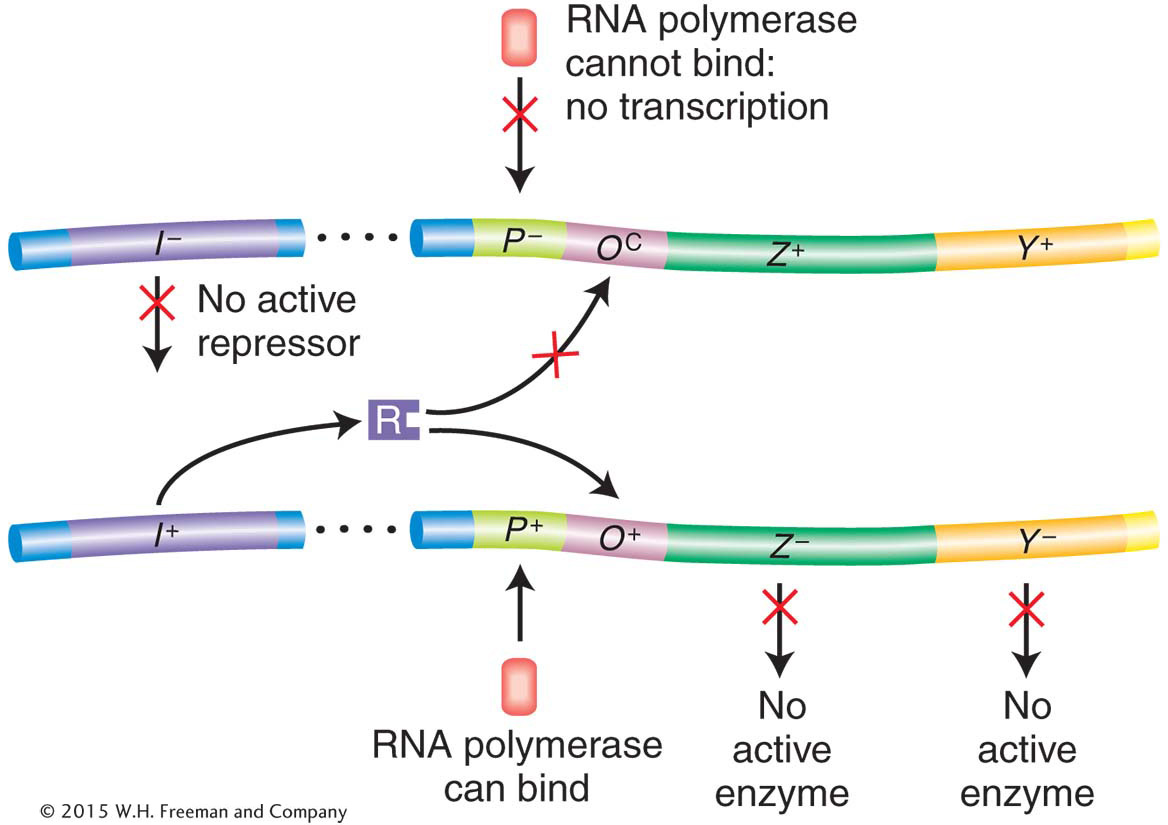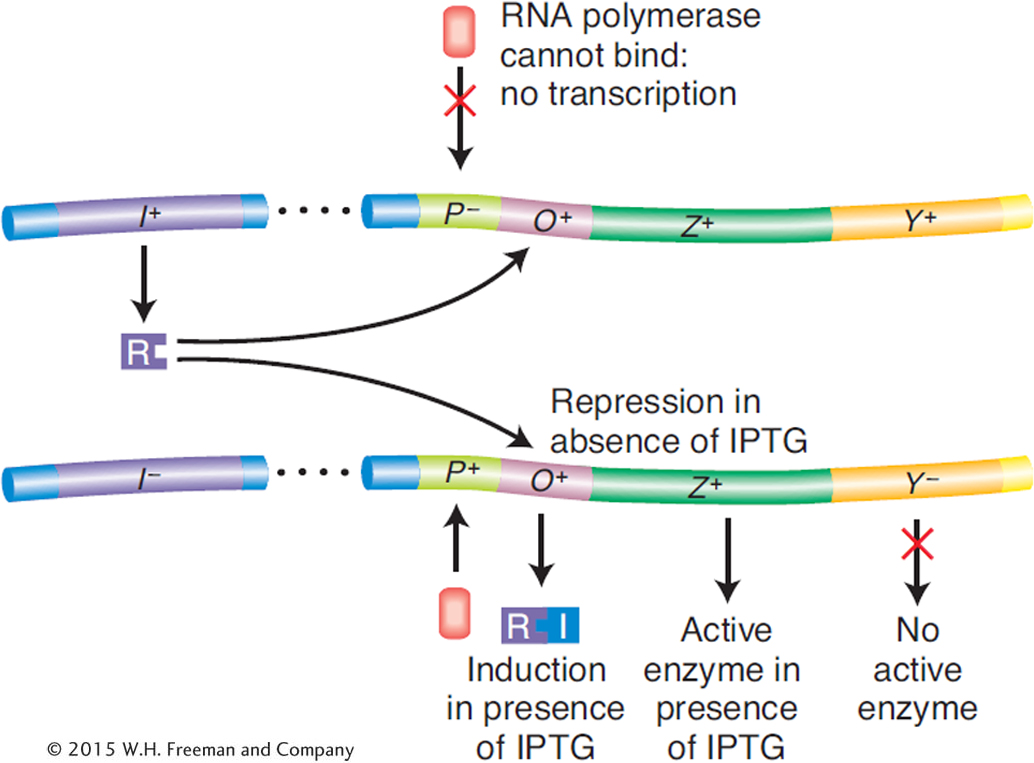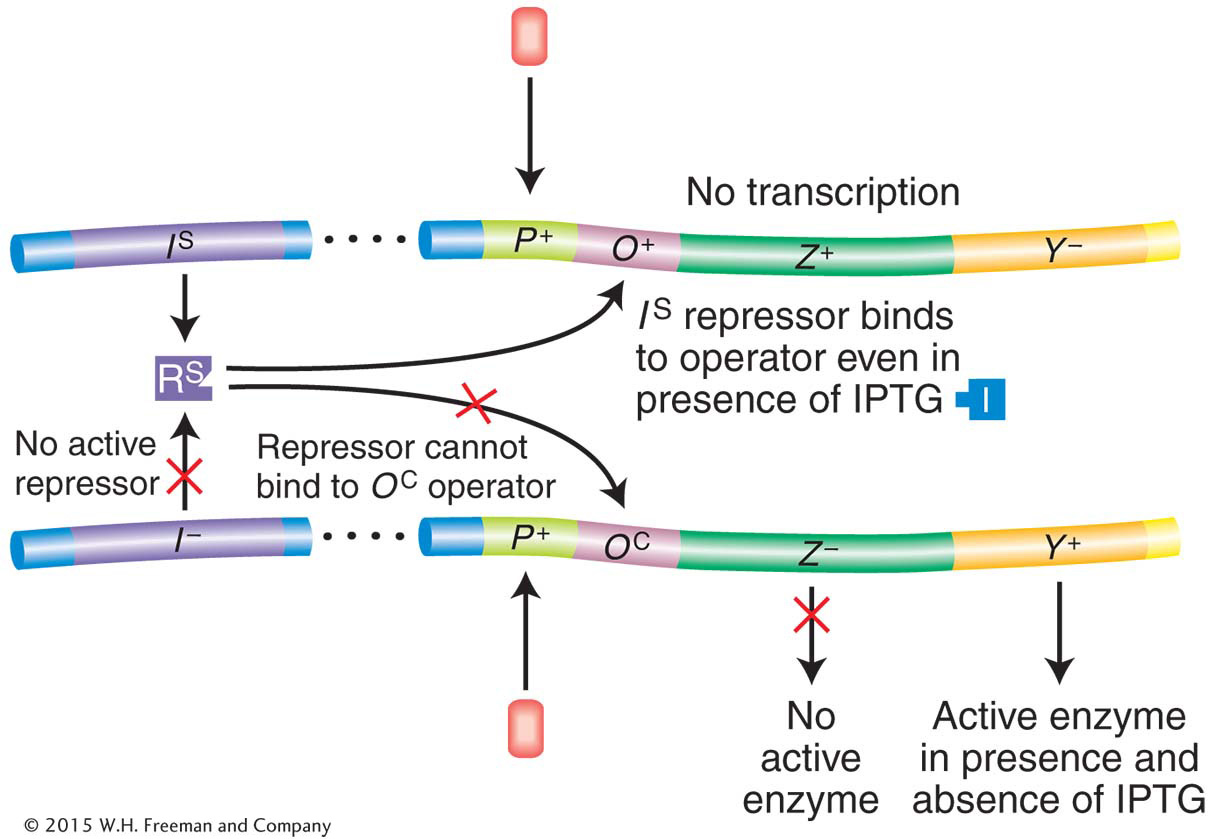SOLVED PROBLEMS
This set of four solved problems, which are similar to Problem 10 in the Basic Problems at the end of this chapter, is designed to test understanding of the operon model. Here, we are given several diploids and are asked to determine whether Z and Y gene products are made in the presence or absence of an inducer. Use a table similar to the one in Problem 11 as a basis for your answers, except that the column headings will be as follows:
|
|
Z gene |
Y gene |
||
|---|---|---|---|---|
|
Genotype |
No inducer |
Inducer |
No inducer |
Inducer |
SOLVED PROBLEM 1.

Solution
One way to approach these problems is first to consider each chromosome separately and then to construct a diagram. The following illustration diagrams this diploid:

The first chromosome is P−, and so transcription is blocked and no Lac enzyme can be synthesized from it. The second chromosome (P+) can be transcribed, and thus transcription is repressible (O+). However, the structural genes linked to the good promoter are defective; thus, no active Z product or Y product can be generated. The symbols to add to your table “−,−, −, −.”
SOLVED PROBLEM 2.

Solution
The first chromosome is P−, and so no enzyme can be synthesized from it. The second chromosome is O+, and so transcription is repressed by the repressor supplied from the first chromosome, which can act in trans through the cytoplasm. However, only the Z gene from this chromosome is intact. Therefore, in the absence of an inducer, no enzyme is made; in the presence of an inducer, only the Z gene product, β-galactosidase, is generated. The symbols to add to the table are “−, +, −, −.”

SOLVED PROBLEM 3.

Solution
Because the second chromosome is P−, we need consider only the first chromosome. This chromosome is OC, and so enzyme is made in the absence of an inducer, although, because of the Z− mutation, only active permease (Y) is generated. The entries in the table should be “−, −, +, +.”

SOLVED PROBLEM 4.

Solution
In the presence of an IS repressor, all wild-
